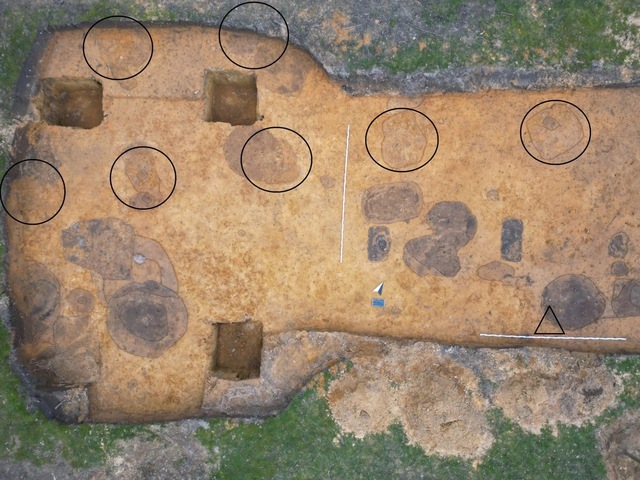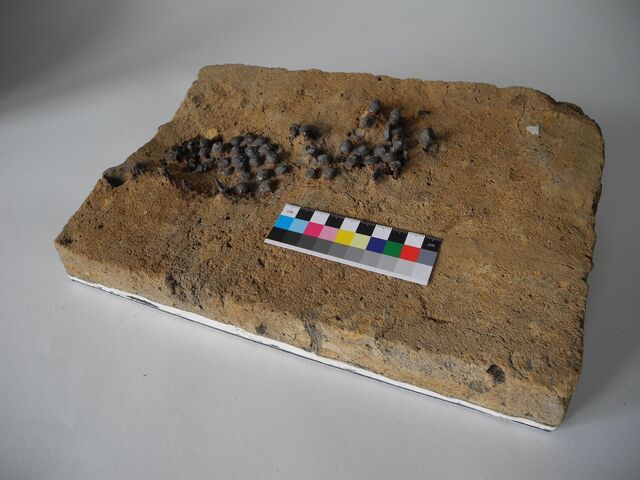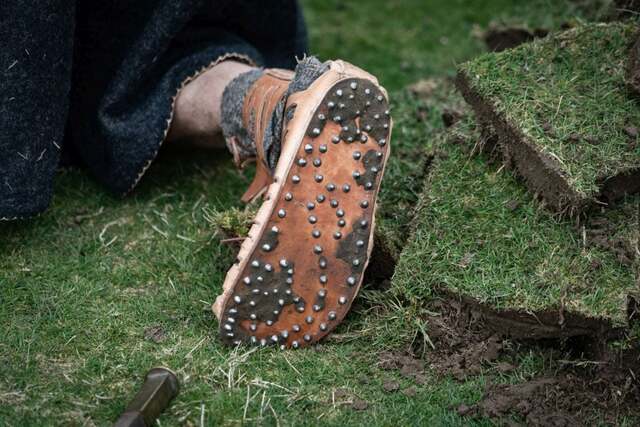Archaeological finds often come from the most unexpected places. In the town of Haltern am See, Germany, a routine excavation for a playground has uncovered a piece of history that speaks volumes about Roman life and the daily experiences of its soldiers. The discovery of a 2,000-year-old Roman soldier’s shoe, or caliga, is a testament to the meticulous craftsmanship of the ancient Romans and provides an invaluable glimpse into their society. This surprising find sheds light on not only the footwear of Roman soldiers but also their daily routines, social practices, and even the subtleties of their comfort.
The Historical Significance of Caligae
The caligae was the iconic footwear worn by Roman soldiers. These sturdy, open-toe sandals were designed to withstand the rigors of long military marches. What made them unique, however, was their construction: leather soles reinforced with dozens of hand-forged nails that created a cleat-like effect, perfect for marching in the varied terrains of the Roman Empire. But these shoes weren’t just about function—they also served as an essential part of a soldier’s identity, symbolizing their status and role within the Roman military system.

The nails on the soles were not merely utilitarian. According to archaeologists, the pressure from these nails created a unique massage-like effect for the soldiers as they marched. Without socks to soften the blow, the soldiers felt every step, but in a way, the nails acted as a kind of foot therapy, stimulating circulation and providing some comfort during their grueling duties. The caligae were more than just shoes; they were an integral part of the Roman soldier’s gear, designed for both endurance and utility in the harsh environments of the empire.
Video
Check out this video to learn about caligae, the distinctive shoes worn by Roman soldiers, and uncover their design and significance in ancient military life.
The Discovery Process: From Playground to Excavation Site
The discovery of the Roman soldier’s shoe was part of an excavation at a playground near the ancient site of Aliso, where the Romans once had a military camp. The site had been identified as a former Roman military and civilian colony, but the real excitement began when the construction team, preparing the site for a new fiber optics installation, stumbled upon ancient Roman waste pits. These garbage pits, though initially thought to be just another ordinary archaeological site, turned out to be rich in historical finds.


Archaeologists, called to investigate, quickly realized that the site had far more to offer than expected. The team uncovered various relics, including the soldier’s shoe. The shoe was found in a garbage pit, likely discarded when it became too worn out for use. The irony of finding such a valuable artifact in what was once considered garbage highlights how important these seemingly mundane objects can be for archaeological research.
Understanding the Construction of Roman Soldier’s Shoes
The caligae were crafted with remarkable attention to detail. The sole of the shoe consisted of multiple layers of leather, reinforced with approximately 60 iron nails hammered through the layers. The sharp tips of the nails faced downward, creating a rough surface designed for better grip during long marches. This unique construction made the shoes not only durable but also functional in wet or marshy environments.
These sandals weren’t merely a fashion statement; they were a key part of the Roman soldier’s everyday gear, providing them with both protection and comfort while they traversed the empire. With no socks to cushion their feet, soldiers experienced a form of “foot massage” with each step, which was a practical solution to the harsh conditions they often faced.
While the leather of the caligae had long since decomposed, the arrangement of the nails remained remarkably intact, providing clear evidence of the shoe’s design. Archaeologists carefully preserved these fragments, using plaster to remove the entire block of earth containing the shoe in one piece. This meticulous work ensured the preservation of this invaluable artifact for further study and display.

Archaeological Findings Beyond the Shoe
Beyond the shoe, the excavation also revealed several other fascinating relics from the past. Among the finds were ovens used to bake bread, a glass game piece, and traces of a wooden wall, all of which offer a deeper understanding of Roman daily life in the area. The ovens are particularly noteworthy as they provide insights into the types of food consumed and the methods used for cooking in Roman military camps.
The glass game piece, while seemingly trivial, suggests that leisure activities were also an important part of Roman life. Soldiers likely enjoyed playing games to unwind during their off-hours, which adds a personal touch to our understanding of life in the Roman army. These finds, in combination with the caligae, create a fuller picture of Roman society, where military duties and personal enjoyment coexisted.
The Impact of the Find: What It Tells Us About Roman Society
The discovery of the Roman soldier’s shoe provides more than just a look at ancient footwear; it opens a window into the broader context of Roman military life. The shoe’s design and functionality speak to the sophisticated engineering of the Romans, who were experts in creating tools, weapons, and daily items designed for practical use. It also illustrates the hardships faced by soldiers, who endured long marches in sometimes brutal conditions, yet found ways to adapt to their environment.
Moreover, the discovery of the shoe in a waste pit suggests something about Roman society’s approach to material culture. Even discarded items like this shoe were valued by modern archaeologists for the information they can provide about the past. This find also underscores the importance of everyday objects in historical research, as they can often reveal more about a culture than grand monuments or artifacts.
Preserving the Past: Conservation and Display
Given the delicate nature of the shoe fragments, preserving them has been a priority for the archaeological team. The shoe, along with the other finds from the site, will be displayed at the LWL-Römermuseum in Haltern am See, where visitors can get a firsthand look at Roman military life. The museum’s display, which coincides with St. Nicholas Day celebrations, will offer a rare glimpse into the world of Roman soldiers, allowing modern audiences to better understand the challenges they faced.
The conservation efforts not only involve the careful preservation of the shoe itself but also the other items uncovered at the site. By using advanced techniques, archaeologists have ensured that these artifacts remain intact for future generations, allowing them to continue telling the story of the Romans.
Video
Watch this video to explore the secrets of Chepstow Castle, uncovering its medieval history and the fascinating stories hidden within its walls.
Conclusion: The Ongoing Legacy of Roman Archaeology
The discovery of a Roman soldier’s shoe may seem like a small find, but it offers a remarkable insight into the daily life of the Roman military. Through this one artifact, we learn about Roman ingenuity, the hardships of soldier life, and even the small comforts they enjoyed on their long marches. This excavation is a reminder of how much can be uncovered from the past through careful archaeological work and how even the most ordinary items can reveal extraordinary stories. As research continues and more finds are uncovered, the legacy of Roman civilization remains as relevant as ever, offering us new perspectives on history.



